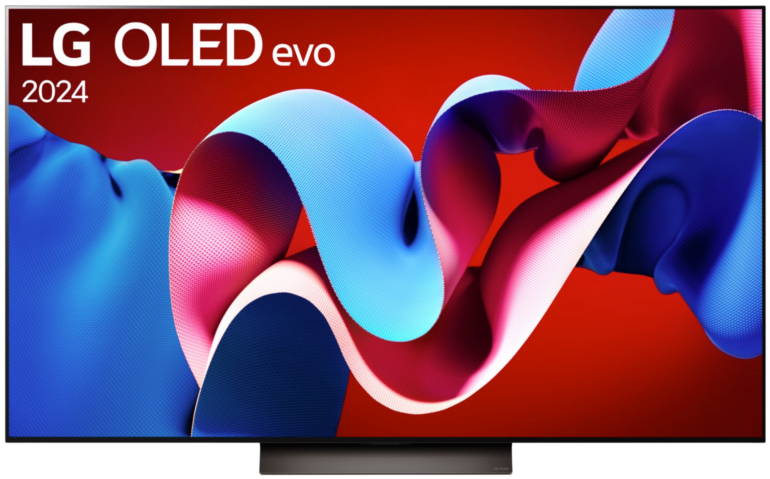Watching a film at the turn of the millennium was inevitably associated with a VHS cassette or DVD. 2007 saw the introduction of Blu-ray, which brought a breath of fresh air and higher screen resolution. A few years later, Amazon, Netflix, Hulu & Co. offered an alternative and serious competition with streaming. Consequently, Blu-ray experienced a severe setback in February 2019. What happened?
Streaming: The video store in 2019
Today, very few people visit video stores to rent films (and to then return them rewound). With streaming providers like Netflix, Amazon Prime Video, Hulu & Co. you can easily sign up for a monthly subscription.
The whole offer is already available in best quality (depending on the subscription model) at the push of a button. The only requirement here is a stable broadband connection.
For smooth streaming, different Internet speeds are required for different resolutions.
SD: (480p-576p) minimum 3 mbps
HD: (720p-1080p) minimum 5 mbps
4K / Ultra HD: (2160p) minimum 25 mbps
Since most Internet connections in American households are fast enough for this purpose, there is actually no reason not to use streaming. Most eyes and ears can cope with the quality of streamed content. Audio and video enthusiasts, however, have reason to complain:

Streaming itself compresses picture and sound signals to conserve bandwidth. The compression algorithms differ from provider to provider. If you don’t want to do without it and want to have the full home cinema experience, you have to use physical media – for example the Ultra HD Blu-ray.
DVD vs. Blu-ray
In order to explain the technical capabilities of the Ultra HD Blu-ray, we have to fall back a few years. Before there was even the normal Blu-ray on the market, the extremely popular DVD ruled. The switch to DVD from the VHS cassette at that time was well received by customers: No rewinding, no sensitive magnetic tapes and significant space savings.
The quality alone leaves much to be desired by today’s standards. After its market launch in 2007 the Blu-ray promised to solve this problem: Full HD quality and top-quality sound on a disc of the same size. The striking blue plastic sleeves should become a real eye-catcher in electronics stores.
However, the changeover was not as easy as the customer had initially presented: Film fans needed an HD TV and a Blu-ray player. And of course the Blu-ray itself – and it cost up to $30 in the first few years, depending on the title. Meanwhile, DVDs cost between $10 and $15. However, the result was impressive after all these purchases!
This video showcases the difference in resolution between DVD and Blu-ray.
Let’s get Ultra
More than a decade later, the quality of Blu-rays began to no longer suffice. In 2009, so-called 3D Blu-rays found their way onto the market, promising greater immersion into the film world with the help of glasses corresponding to the TV set. From the couch into space.
However, this innovation never really gained acceptance in homes of its own – 3D is much more popular in the cinema. Even if the annoying glasses were not warmly received by every viewer.
What followed was the Ultra HD Blu-ray. The 3D version is no longer supported here. Instead of the old-fashioned Full HD resolution, content can be shown in Ultra HD resolution, i.e. 3840 x 2160 pixels. Not “true” 4K, but it’s something.
Further highlights are compatibility with Dolby Vision and HDR10. This requires an Ultra HD television that has an HDMI 2.0 interface to transmit the large amounts of data.
Setback for Blu-ray
Blu-ray players did not have to be replaced by newer devices to play the new Blu-rays. But now comes the setback:
In February 2019, consumer electronics giant Samsung decided to completely discontinue the production of Blu-ray players, as reported by The Verge. Planned products have been shut down.
Samsung is thus following in the footsteps of its Chinese competitor Oppo, which announced in 2018 that it would cease manufacturing its products.

Now what? Will it still help to expand the domestic Blu-ray collection if no more players are produced? A little like rims without a car. At this point it is worth knowing that current consoles like the Xbox One S or Xbox One X can play UHD Blu-rays. Upcoming consoles, like the Playstation 5 and the Xbox Project Scarlett, will continue to have optical drives, as reported by multiple media. We can therefore assume that the Blu-ray will retain its right to exist for the time being. So has streaming won the battle in the home theater business or not?
Streaming is cheaper
A sobering but true fact. It goes without saying that a once purchased Blu-ray can be watched as often as desired. A disc lasts about 15 years before its condition will start to deteriorate. Streamed content can be viewed as often as the subscription runs. It is not possible to make digital copies – legally.
But if you calculate how much media consumption costs, you’ll soon find that streaming actually is a lot cheaper. If we estimate that a month with a random streaming provider costs $10, we can look at the entire offer for this sum until our eyes become square. It doesn’t take more than a television with Internet access, a laptop, a tablet or, if necessary, a smartphone.
Blu-rays, on the other hand, already cost about $10 individually, can only be played on a Blu-ray player and require comprehensive technical peripherals. Want to watch the last episode of your favorite series on the train on your smartphone? Unfortunately, this is not possible with the Blu-ray. But the box set of all available seasons, including making-of and the director’s commentary, looks pretty good on the shelf. But where is the priority?
Best available quality or simplicity with streaming?
Admittedly, in theory, streaming providers offer content with the same quality as Ultra HD Blu-rays. The catch? With very few providers this is possible without any problems. As a rule, the quality of the picture resolution depends on the available broadband connection. Simply set the quality and let the video preload (buffer)? You can’t, except on YouTube. If there is a fast Internet connection, the hosting servers of the providers must also play along. If the load is too high, there is unfortunately no Ultra HD.
| Netflix | Amazon Prime Video | Sky Ticket | Maxdome | Hulu | Yahoo View | Disney+ | YouTube | |
|---|---|---|---|---|---|---|---|---|
| Subscription | monthy | monthly / yearly | monthly | monthly | monthly | / | monthy / yearly | Pay per view only |
| Preis | $8.99 / $12.99 / $15.99 | $8.99 / $12.99 m. w/ Amazon Prime / $119.99 y. with Amazon Prime | 9,99 € | 7,99 € | $5.99 / $11.99 (no Ads) | free | $6.99 m. / $69.99 y. | $2.99 - $19.99 |
| Trial month | Yes | Yes | No | Yes | Yes | / | ? | / |
| Notice period | No | No | 7 days | 14 days | No | / | ? | / |
| Streaming quality | up to 4K | up to 4K | Full HD | Full HD | Full HD | HD | up to 4K | up to 4K |
| Pay per view | No | Yes | No | Yes | No | / | ? | Yes |
| Available in the US? | Yes | Yes | No | No | Yes | Yes | Yes | Yes |
This problem will never occur with Blu-rays. Simply insert the disc into the player, sit on the couch and off you go. The problem with too slow Internet could be solved in conurbations with fiber optics and 5G cellular networks in the foreseeable future. The latter promises transmission rates of up to 10 Gbit/s (!).
5G cellular networks will have a serious impact on the world of technology.
However, the simplicity of Netflix & Co. can hardly be surpassed by home cinema systems based on Blu-ray. Of course, an elaborate home cinema can be lovingly built up by hobbyists in painstaking detail work. But streaming users install an app on their smartphone or navigate to a URL on the Internet and log in. Done. Even children can use the user interface, especially since there is a fantastic selection of children’s programs in the catalog.
Who’s the winner?
At the end of the day, of course, every viewer has to decide for himself. The advantages and disadvantages of streaming and Blu-ray in a nutshell:
Our conclusion – Blu-ray
Our conclusion –Streaming
- Best available quality
- No loading times when watching
- Comprehensive film catalogue
- Compatibility with Dolby Vision and HDR10
- Content for children
- Technical periphery necessary
- Blu-ray players are no longer produced
- Not flexible
- Prone to damage
- Simple user interfaces
- Operation on several devices
- Not only TV, but also Smartphone and Laptop
- Large selection of films and series
- Content for children
- “Unbreakable”
- Depending on Internet speed and hosting servers
- Continuous subscription necessary
What do you think of this debate? Is the Blu-ray with one leg in the grave? Has streaming won the battle for the favor of the audience? What do you prefer to use? Please answer these questions in a comment. We are looking forward to your suggestions and criticism!

